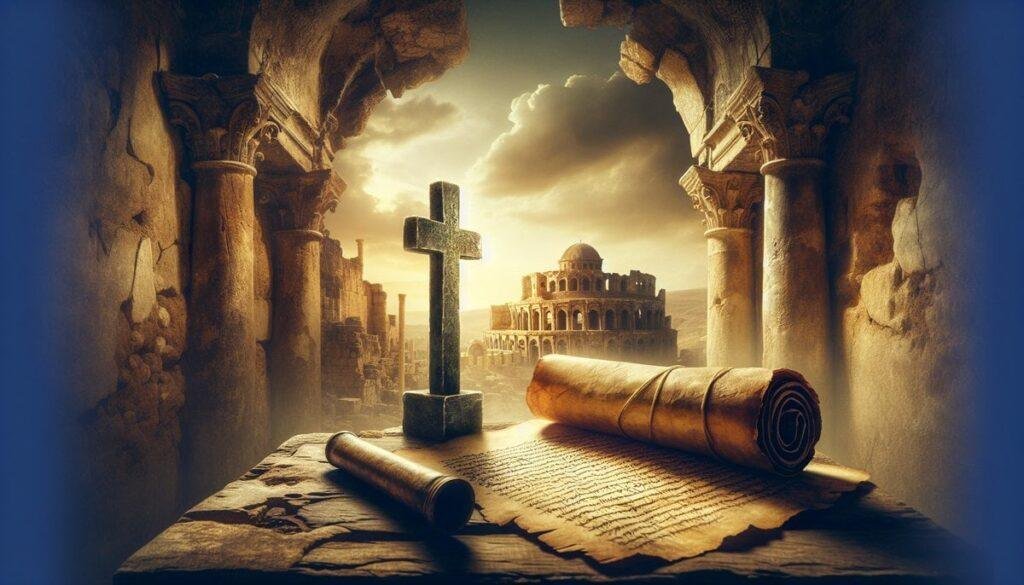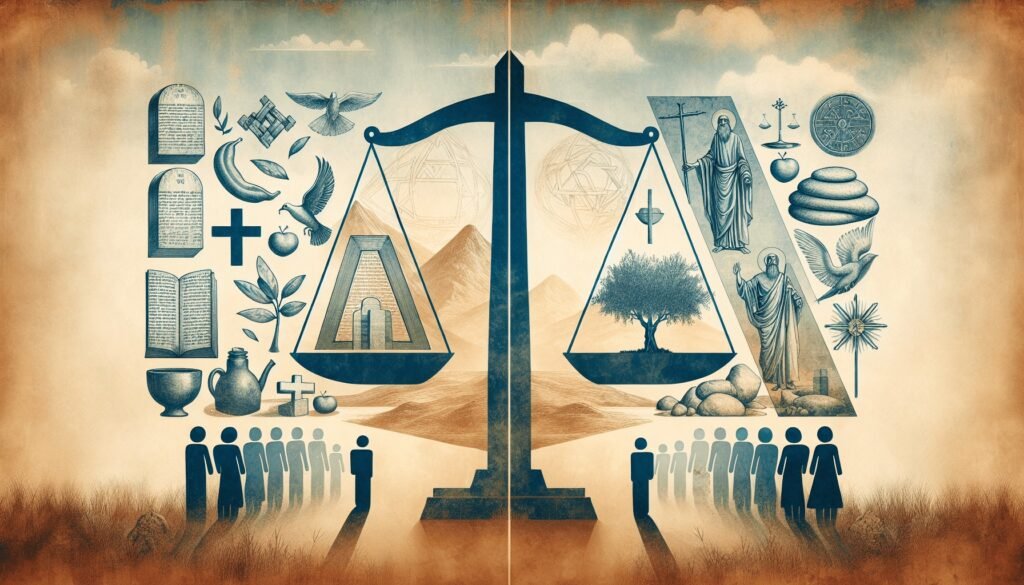What do you think happens in the stillness of the night when you’re surrounded by ancient echoes? Can you hear the faint melodies just beyond the veil of time? If you’ve ever pondered about the divine music that might emanate from sacred places, you’re in for an intriguing journey through the mysteries of the Ark’s Chamber.

The Ark of the Covenant: A Brief Overview
Before we tread deeper into the enchanting realm of the Ark’s melodies, let’s establish what the Ark of the Covenant truly represents. In the biblical narrative, this covenanted chest housed the original tablets of the Ten Commandments, a symbol of divine guidance. Originating from ancient Israelite culture, the Ark is shrouded in mystery and significance.
Historical Context of the Ark
You might find it fascinating to note that the Ark was constructed during Moses’ time, according to the Book of Exodus. Its creation was detailed with intricate instructions, emphasizing how it was meant to dwell in the most sacred spaces—the Holy of Holies. This protected chamber within the Tabernacle had a unique significance, acting as a divine access point between heaven and earth.
The Enigma of the Chamber
Imagine standing before a sacred altar, cloaked in darkness, where whispers of the past converge with the present. The Ark’s Chamber, housing such a monumental artifact, is not just a physical space; it’s a spiritual nexus. Here are some elements that add depth to its enigma:
- Architectural Layout: The structure of the Tabernacle was meticulously planned, reflecting an ordered universe. Its intricate designs tell stories of a bygone era.
- Cultural Significance: The Ark was not merely a religious relic; it was a symbol of identity for the Israelites who saw it as a manifestation of God’s presence.
The Role of Sound in Sacred Spaces
Have you ever noticed how sound influences your perception of a place? Whether it’s a church’s resonant organ or the quiet rustle of leaves in a sacred grove, sound plays a pivotal role in creating a spiritual atmosphere.
The Sacredness of Sound
In ancient rituals, sound was crucial. Shofar blasts, chanting, and music elevated the sanctity of the moment. The Ark, being central to many of these rituals, served as a source of divine sound.
- Frequency and Vibration: Researchers have even explored how sound waves may influence the physical space surrounding sacred locations. The Ark’s Chamber, with its acoustics, could have amplified the spiritual experience during nighttime vigils.
- Psychological Perspective: Engaging with sound in these settings promotes a meditative trance, making one feel closer to the divine.
The Nature of Sacred Melodies
Contemplating the Ark’s melodies invites us to think more deeply about what sacred sound might encompass.
- Chorale Music: Common in ancient religious practices, chorale compositions often paired with readings from scripture would elevate the worship experience.
- Instrumental Components: Instruments such as lyres and harps could potentially have played a role in this auditory landscape.
Biblical References to Music and Worship
Scripture is ripe with passages that highlight the significance of music within the context of worship.
Psalms: The Musical Diary of the Soul
The Book of Psalms provides an extensive musical guide that offers insights into the Israelite worship experience.
- Psalms of Ascent: These were sung by pilgrims traveling to Jerusalem, creating a communal bond through shared melodies.
- Psalms of David: Many of these reflect both triumphs and sorrows, showcasing the emotional capacity of music to resonate on a spiritual level.
Instruments of Worship in the Old Testament
In ancient Israel, music wasn’t an afterthought; it was incorporated into everyday life and spiritual practices.
| Instrument | Significance |
|---|---|
| Shofar | Used for calls to worship and events |
| Harp | Often associated with the King David |
| Lyre | Instrument used in many forms of worship |
Archaeological Evidence of the Ark’s Existence
You might wonder what tangible evidence supports the existence of such a significant artifact. Archaeological findings have provided glimpses into the past and the people who worshipped in its shadow.
Discoveries and Sites
While many locations claim to be the final resting place of the Ark, some archaeological sites provide notable context.
- Mount Nebo: Historically significant, this mountain is where Moses is said to have viewed the Promised Land. The surrounding sites include ancient temples that align with worship practices centered around the Ark.
- Temple Mount: Located in Jerusalem, this site is rich with history and offers extensive archaeological contributions to understanding the practices surrounding the Ark.
The Dead Sea Scrolls: A Glimpse into the Past
Among the most significant archaeological finds related to the Ark are the Dead Sea Scrolls. These ancient manuscripts share insights into the religious life and beliefs of the time, shedding light on how the Ark was perceived and revered.
- Religious Practices: The scrolls include texts on rituals and laws, indicating how the Ark was central to worship.
- Historical Accounts: Some records hint at the Ark’s disappearance, adding layers to its enigma.

Theological Implications of the Ark’s Melodies
Have you considered how the Ark of the Covenant transcends mere physicality and touches on deeper theological themes? The melodies associated with the Ark may offer profound insights into faith and spirituality.
Symbolism of the Ark
The Ark represents much more than a container for holy relics; it symbolizes God’s covenant with humanity. It’s a reminder of divine guidance and presence, a theme echoed in various theological discussions.
- Covenantal Relationship: The Ark signifies not only divine authority but also the closeness of God’s relationship with the people.
- Communal Worship: The shared experiences of worshiping around the Ark foster a sense of community and identity.
Nighttime Vigil: Spiritual Reflection
When night falls, the ambiance transforms. Nighttime vigils can evoke an intimate connection with the sacred. This practice is steeped in tradition, signifying devotion and contemplation.
- Meditative Practice: The stillness of the night often allows for reflection and prayer, creating an atmosphere where one might sense the Ark’s music.
- Spiritual Awakening: Engaging in nighttime vigils may lead to a deeper spiritual awakening, akin to the experiences of those who historically interacted with the Ark.
Cultural Significance of Nighttime Vigils
What does it mean to engage in nighttime vigils, particularly in relation to the sacredness of space?
Historical Practices of Vigil
Throughout various religious traditions, the nighttime vigil has been a practice meant to honor the divine.
- Cultural Heritage: Many cultures align their spiritual practices with nighttime, viewing it as a time for rejuvenation and reflection.
- Modern-Day Vigil Practices: In contemporary spirituality, vigils continue to serve as a means of connection, healing, and community support.
The Universal Language of Music
Nighttime vigils also underscore the universal nature of music as a form of expression and communication.
- Cultural Variations: Many cultures have unique forms of music associated with night rituals, yet they universally underscore the human experience.
- Spiritual Communication: Music transcends language barriers, allowing individuals to share their spiritual experiences in a communal atmosphere.
Bridging Ancient Contexts and Modern Perspectives
How can the ancient practices surrounding the Ark inform your contemporary spiritual experience? By weaving together historical and modern insights, you can unlock a more profound understanding of spirituality.
Contemporary Music and Worship
Consider how modern worship practices, with their melodies and rhythms, echo the sacred sounds associated with the Ark.
- Folk Traditions: Many modern faiths employ folk traditions in their music, reminiscent of the sounds that might have resonated around the Ark.
- Contemporary Spirituality: As spirituality evolves, these ancient practices serve as a foundation for new expressions.
Personal Spiritual Reflections
When you think about engaging with the melodies of the Ark’s Chamber, consider how this can be a gateway to your personal spiritual exploration.
- Mindfulness in Worship: Engaging with sounds, whether they are religious hymns or soft instrumentals, can elevate your spiritual practice.
- Introspection and Growth: Nighttime, with its inherent quietness, creates a perfect environment for introspection and growth.
Conclusion: The Harmonious Echoes of the Ark’s Chamber
Have you felt the profound connection between the past and the present? The Ark’s Chamber, though ancient, continues to echo through time, inviting you to listen to its enigmatic melodies. The interplay of sound, spirituality, and cultural significance enriches your understanding of this artifact.
As you ponder the lessons of the Ark, remember that its legacy extends beyond mere history; it’s an invitation to engage with something greater than yourself. The music of the Ark, though faded, whispers through time, hinting at the spiritual truths waiting to be discovered in the quiet of the night. Embrace the call of the Ark’s melodies, and you may just find yourself resonating with those same enchanting tones that have traveled through centuries.


